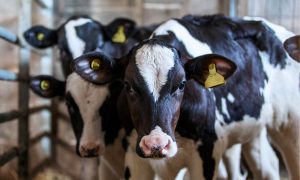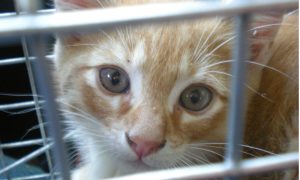In a ploy to avoid decreased sales on a federally-restricted, toxic herbicide linked to crop damage, Monsanto is attempting to bribe farmers with a program incentivizing its use. Monsanto is offering $6 cash back per acre, which represents a rebate of over 50%, to soybean farmers who spray the herbicide XtendiMax with VaporGrip. The herbicide is designed for use on Roundup Ready 2 Xtend soybeans, which are genetically modified by Monsanto to resist the toxins in XtendiMax. The agribusiness giant is also promising $5.50 cash back per acre to cotton growers who plant cotton varieties engineered with XtendFlex Technology.
This program may sound dangerous and convoluted, because it is. Dicamba, the main ingredient in XtendiMax, is a potent toxin which frequently kills far more plants than farmers intend. In 2016, 10 states reported crop damage caused by volatilization, or pesticide drift, of dicamba: Missouri, Alabama, Arkansas, Illinois, Kentucky, Minnesota, Mississippi, North Carolina, Tennessee, and Texas.
XtendiMax owes its initial success to Monsanto’s notorious big-seller, Roundup, a cancer-causing, glyphosate-based herbicide which produced a shocking 61.2 million acres of glyphosate-resistant weeds in 2012 alone, according to a Stratus Agri-Marketing study. This explosion of unwanted plants caused considerable difficulty for farmers, who jumped at the chance to use XtendiMax on genetically modified, dicamba-resistant strains of soybeans and cotton in 2015, when Monsanto put these products on the market — without waiting for EPA approval. Particulate from this untested herbicide drifted onto — and wiped out — countless acres of unsprayed, non-GMO crops, causing farmers considerable financial losses and leaving them in fear of a similar disaster, should they dare to spray XtendiMax anywhere near unmodified crops in the future.
Monsanto claims that these losses happened because their dicamba-based herbicide was used illegally, by consumers who were warned against spraying before official EPA approval. Yet the agribusiness giant sold farmers the XtendiMax, as well as the cotton and soybeans to go with it, with promises that it would solve the glyphosate-resistant weeds that Monsanto’s own Roundup brand had created. This deceit to gain a profit at the expense of others is typical of Monsanto’s business model.
In spite of this underhandedness, Monsanto’s history of selling destructive products, and previous crop losses from dicamba drift, the EPA decided in November of 2016 to approve “over-the-top” usage of Monsanto’s XtendiMax with VaporGrip Technology, signaling legal permission for the chemical cocktail to be sprayed on growing crops.
Due to the destructive nature of the chemical dicamba, the EPA also mandated that the product be sold with a list of usage requirements for farmers. The requirements are costly, time-consuming, and impractical; and none of them offer any real guarantee against crop destruction. The list is so unreliable, in fact, that the states of Missouri, North Dakota, and Arkansas are all considering prohibition of dicamba-based herbicides in 2018.
The states’ apprehension is understandable. Take a look at the “General Precautions” Monsanto lists for using XtendiMax:
- XTENDIMAX WITH VAPORGRIP TECHNOLOGY HERBICIDE should not be applied on or near desirable trees or plants.
- Apply XTENDIMAX WITH VAPORGRIP TECHNOLOGY HERBICIDE when air temperature is between 10 and 25°C. Do not apply when there is a risk of severe fall in night temperature after use.
- As this product is not registered for the control of pests in aquatic systems, DO NOT use to control aquatic pests. DO NOT contaminate irrigation or drinking water supplies or aquatic habitats by cleaning of equipment or disposal of wastes.
- Do not treat areas where movement of the chemical into the soil or surface washing may bring XTENDIMAX WITH VAPORGRIP TECHNOLOGY HERBICIDE into contact with roots of desirable plants.
- Crop damage can occur if XTENDIMAX WITH VAPORGRIP TECHNOLOGY HERBICIDE is applied at any time other than the recommended crop stage.
These precautions make it clear that XtendiMax should not be allowed anywhere near a human being, food and water sources, animals, or the earth. Unfortunately, due to Monsanto’s irresponsibility, farmers fear more heavy losses from dicamba drift unless they purchase only dicamba-resistant crops. Continued, shameless practices by Monsanto force growers into cycle after vicious cycle of destructive pesticide use, damaging the environment and farmers’ profits while enriching the herbicide manufacturer.
Let’s hope Monsanto’s hollow promises of cash back are not incentive enough to coerce farmers into using their dangerous products, and that states stay strong and resist this latest attempt by corporate interests to maintain a stronghold on farmland.






